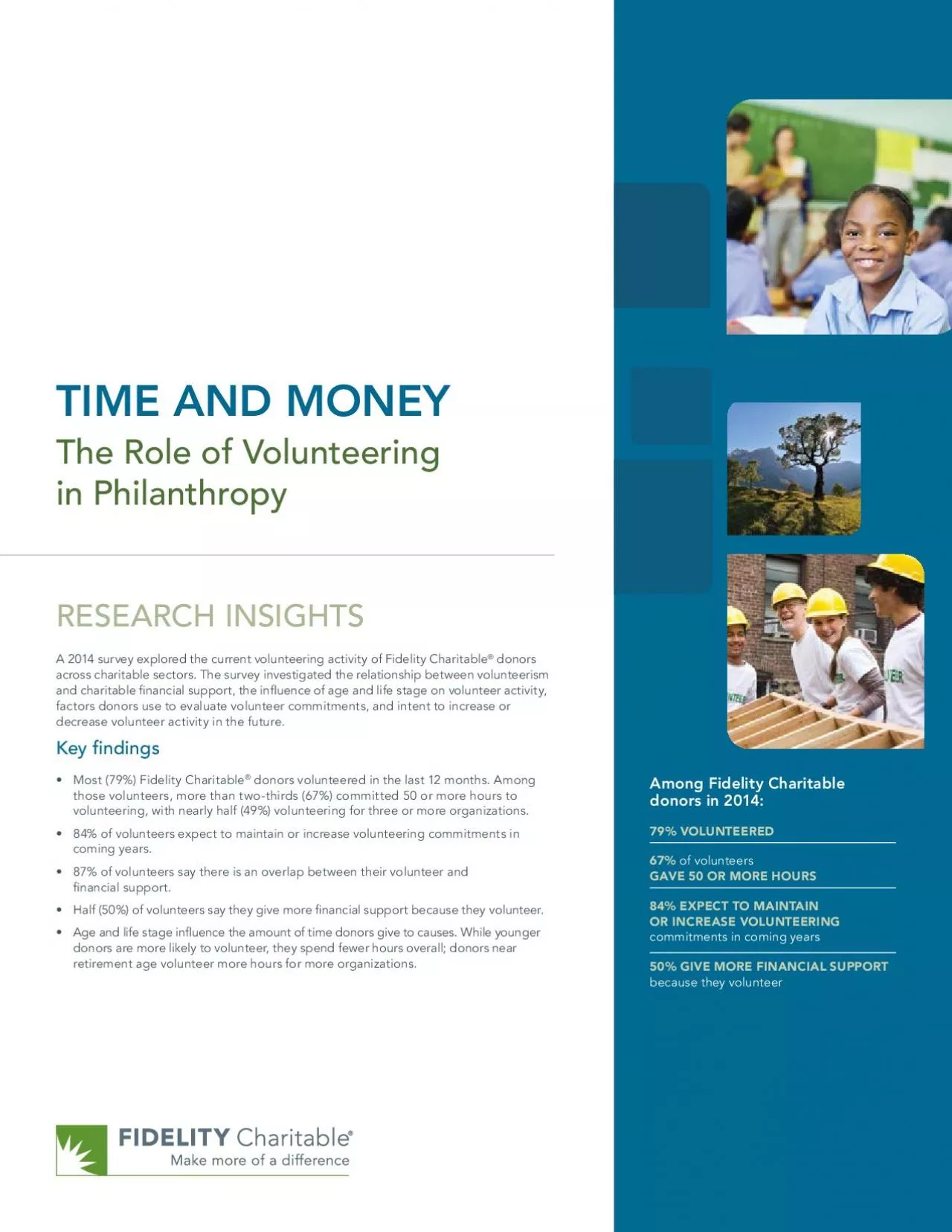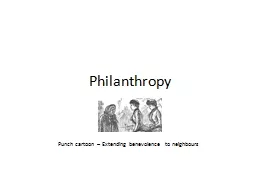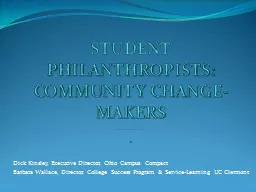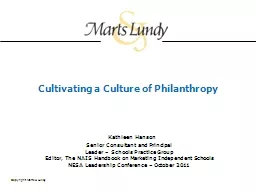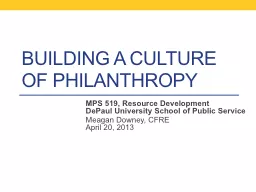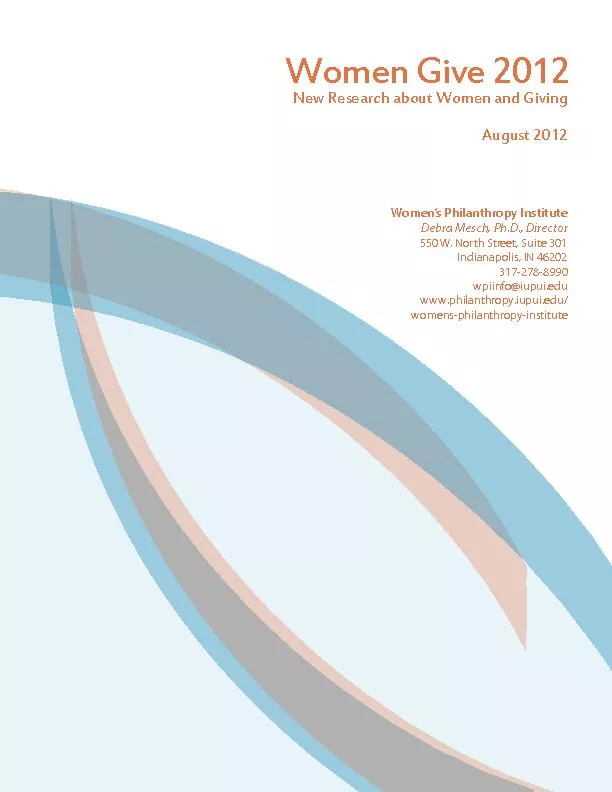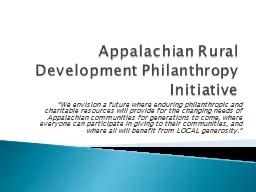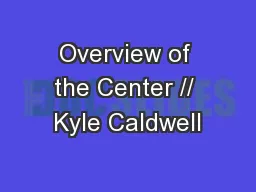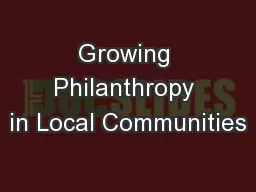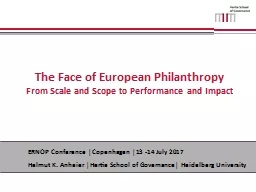PDF-The Role of Volunteeringin Philanthropy
Author : jasmine | Published Date : 2021-09-25
Among Fidelity Charitable donors in 201479 VOLUNTEERED67 of volunteersGAVE 50 OR MORE HOURS84 EXPECT TO MAINTAIN OR INCREASE VOLUNTEERING commitments in coming years50
Presentation Embed Code
Download Presentation
Download Presentation The PPT/PDF document "The Role of Volunteeringin Philanthropy" is the property of its rightful owner. Permission is granted to download and print the materials on this website for personal, non-commercial use only, and to display it on your personal computer provided you do not modify the materials and that you retain all copyright notices contained in the materials. By downloading content from our website, you accept the terms of this agreement.
The Role of Volunteeringin Philanthropy: Transcript
Download Rules Of Document
"The Role of Volunteeringin Philanthropy"The content belongs to its owner. You may download and print it for personal use, without modification, and keep all copyright notices. By downloading, you agree to these terms.
Related Documents

